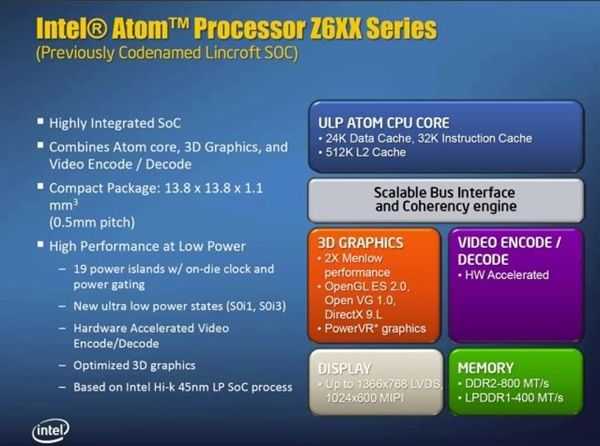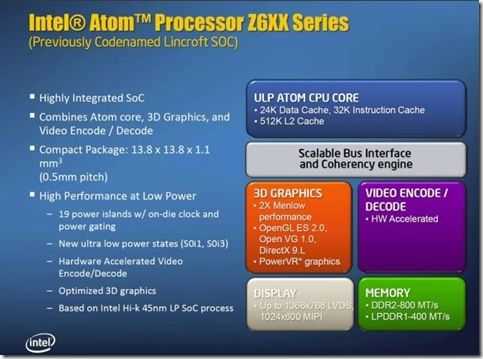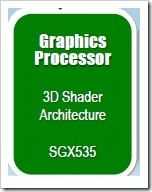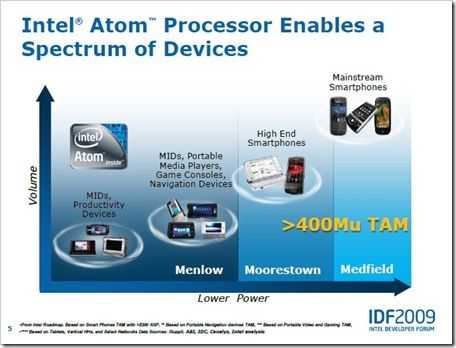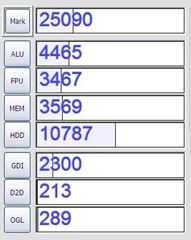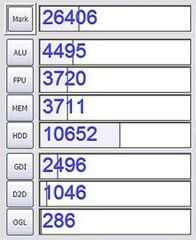There’s good and bad news to be drawn out of the news that Intel will go with a PowerVR core on Cedar Trail, the next generation of Netbook platform. VR-Zone report that Cedarview (the processing engine in the Cedar Trail platform) will include an SGX545 graphics core and not Intel graphics as had previously been suggested here.
VR-Zone Cedarview to sport PowerVR graphics.

The good news is that it brings the netbook platform in-line with other Atom platforms used for TV, ultra-mobile, embedded and tablet products and simplifies the builds for MeeGo and Android. The bad news is that the drivers for past versions of the SGX core used in Menlow (Z5xx-series CPUs) were never that good. Linux support, in particular, was a big problem.
Intel will, of course, be aware of that and will have to take steps to improve it because if 30 million sales of netbooks have unstable or poorly implemented drivers, it could have a serious impact.
As for the theoretical performance of the SGX545, I can only offer these figures that I dig out of web searches this morning. They aren’t confirmed.
GMA500 (PowerVR SGX535 200Mhz) 13 million triangles per second
GMA600 (PowerVR SGX535 400Mhz) 26 million triangles per second (assumed)
GMAxxx (PowerVR SGX545 400Mhz) 80 million triangles per second (low power version)
GMAxxx (PowerVR SGX545 640Mhz) 128 million triangles per second.
There’s a potential 10x improvement over GMA500 there but these figures are fairly meaningless as memory bus, cpu processing power and other implementation issues (including driver software) will affect the true performance. The diagram shown on VR_Zone though shows a target of 2x Pinetrail. While that’s probably not going to beat the 3D performance of AMDs Zacate platforms, it’s a welcome boost that will drive non-gaming devices well and, we assume, keep the power requirements down. For non-gamers, the balance of CPU, GPU, media and power drain is likely to be good.
My outstanding question:Will Intel enable ‘shutdown’ idle (sub 200mw system drain) for screen-off scenarios on Cedar Trail like it is trying to do on Oaktrail, Moorestown and Medfield? This is something they may work with Microsoft on for Windows 8
The news has not been officially confirmed by Intel but that might happen at Computex later this month. If not, wait for hands-on at IDF 2011 in September where we expect final launch and product availability to be announced.

